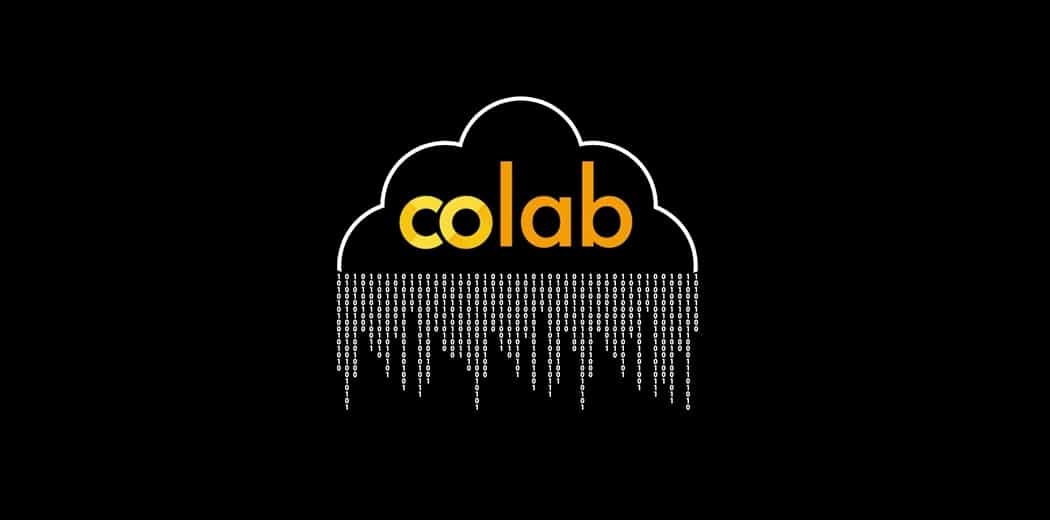It is safe to assume that AI will be a significant player in the near future and will likely be in our lives in more ways than we can imagine. Because of this, there are many people who are fascinated by deep learning, data science, and neural networks.
Page Contents:
What is Google Colab?
Google Colab (short for Collaboratory) is a cloud-based development environment provided by Google, which allows users to write, run, and share Python code and Jupyter notebooks. It provides access to powerful GPU and TPU computing resources, which makes it popular among machine learning practitioners who need to train complex models that require a lot of computational power.
Colab offers several features that make it easy to get started with machine learning, including pre-installed libraries for data analysis and machine learning, access to cloud storage, and the ability to collaborate with others in real time.
One of the biggest advantages of using Colab is that it is free to use, although users are limited to a certain amount of computing resources. Users can also upgrade to a paid plan to get more resources and advanced features.
Best of all, you don’t need to install anything or deal with Python modules to install and configure. Simply, you’ll be processing everything in the cloud. You can also import your previous projects from Jupyter Notebook.
Overall, Google Colab is a powerful and convenient platform for developing and sharing machine learning projects, especially for those who do not have access to high-end hardware.
It is not difficult to discover that with AI you can do many things, such as finding new life in space, creating particular images, creating faces and voices that can seem realistic, and many other interesting applications.
However, it is enough to try one of the recent technologies where Artificial Intelligence (AI) is applied to realize that apart from some rather heavy computer, statistical and mathematical knowledge, there is also a need for the necessary hardware to exploit it.

Just on this side, Google Colab comes in handy. Google Colaboratory or Google Colab (for short) works a bit like Jupyter Notebook, software used by Python developers that allows you to program directly in your browser.
What are the specifications for using Google Colab?
The technical specifications for using Google Colab already in the free version is powered by a 2.20 GHz Intel Xeon CPU and GPU, 13 GB of RAM, Tesla K80 accelerator, and 12 GB of DDR5 VRAM while the TPU is an Intel Xeon CPU at 2.30GHz, 13GB of RAM, and a cloud TPU with 180 teraflops.
Both GPU and TPU are free for up to 12 hours, and if you need more, you can opt to buy a paid Colab Pro and Pro+ subscription. There are also many pre-installed libraries on Colab, but you can also install your own from the command line.
Google Colab integrates with GitHub, so you no longer need to use the terminal or other software. Connecting your GitHub with Google Colab allows you to import and export code with a couple of clicks.
Other Features of Colab
Here are some additional things you might find helpful to know about Google Colab:
- Collaboration: Google Colab allows you to collaborate with others in real time. You can share notebooks with others by sending them a link, and multiple people can edit the same notebook simultaneously.
- GPU/TPU support: Colab provides free access to powerful GPUs and TPUs, which can speed up your machine learning computations significantly.
- Pre-installed libraries: Colab comes with many popular data science and machine learning libraries pre-installed, including TensorFlow, PyTorch, Keras, and Pandas.
- Access to Google Drive: Colab allows you to easily access and store your data in Google Drive, which can be very convenient if you are working with large datasets.
- Limitations: While Colab offers a lot of great features, it does have some limitations. For example, the free version only provides limited resources, so if you need more powerful hardware, you may need to upgrade to a paid plan or use a different platform. Additionally, Colab sessions are not always persistent, which means you may lose your work if you close the browser or lose internet connectivity.
Overall, Google Colab is a powerful and flexible tool for data analysis and machine learning, especially for those who need to work with large datasets and advanced machine-learning models but do not have access to high-end hardware.

Google Colab vs. Google Colab Pro
Google Colab Pro is a paid subscription service offered by Google that provides more advanced features and greater computing resources than the free version of Google Colab. Some of the main features of Colab Pro include:
- Increased computing resources: Colab Pro offers more powerful GPUs and TPUs, longer session times, and larger amounts of RAM and storage space compared to the free version of Colab. This allows you to train larger machine-learning models and run more complex computations.
- Priority access to resources: Colab Pro users get priority access to computing resources, meaning that their jobs are more likely to be processed immediately and with fewer delays.
- Enhanced collaboration features: Colab Pro provides additional collaboration features, such as the ability to collaborate with up to 4 team members on the same notebook and the ability to share notebooks with read-only access.
- Technical support: Colab Pro users have access to technical support from the Google Cloud team, which can be helpful if you run into issues with your notebooks.
- Custom environments: Colab Pro users can create and customize their own computing environments, which allows you to install and use any software packages or libraries that you need.
Overall, Colab Pro is a great option for data scientists, researchers, and machine learning practitioners who need more computing power and advanced features than what is available in the free version of Colab. However, it comes at a cost and may not be necessary for everyone.
Google Colab vs. Jupyter
Google Colab and Jupyter are both popular tools used for data analysis and machine learning. Here are some key similarities and differences between them:
Similarities:
- Both tools allow you to create and run code in a notebook-style interface.
- Both support multiple programming languages, including Python, R, and Julia.
- Both allow you to easily visualize data and create interactive plots.
Differences:
- Google Colab runs in the cloud, while Jupyter can be run locally on your computer.
- Google Colab provides free access to powerful GPUs and TPUs for machine learning, while Jupyter relies on the resources of your local computer.
- Google Colab offers built-in support for many popular data science and machine learning libraries, while in Jupyter, you need to install and configure libraries yourself.
- Google Colab offers collaborative editing and sharing features, allowing you to easily work with others in real time, while Jupyter requires you to share your notebook files manually.
Overall, the choice between Google Colab and Jupyter depends on your specific needs and preferences. If you need access to powerful computing resources, are working with large datasets, or want to collaborate with others, Google Colab may be a better choice. If you prefer to work locally on your own computer, have specific library requirements, or want greater control over your computing environment, Jupyter may be a better option.
What is the Google Colab sign-in link?
To log in to Google Colab, you need a Google account. Here are the steps to log in:
- Go to the Google Colab homepage at https://colab.research.google.com/
- Click on the “Sign in” button in the top right corner of the page.
- Enter your Google account email address and click “Next.”
- Enter your password and click “Next” again.
- If two-factor authentication is enabled for your account, follow the prompts to complete the authentication process.
- Once you are signed in, you will be taken to the Colab dashboard, where you can create a new notebook or open an existing one.
If you do not have a Google account, you can create one for free by clicking the “Create account” button on the sign-in page and following the prompts to set up your account.
Conclusions
Google Colab is nothing short of amazing. If you’re getting into AI programming, it’s a guarantee that it offers quality-of-life improvements for many developers. Even though it’s geared towards machine learning, neural networks, and other AI training methods, it’s still a competent choice for anyone learning Python. I recommend you try it out, it’s free after all.
